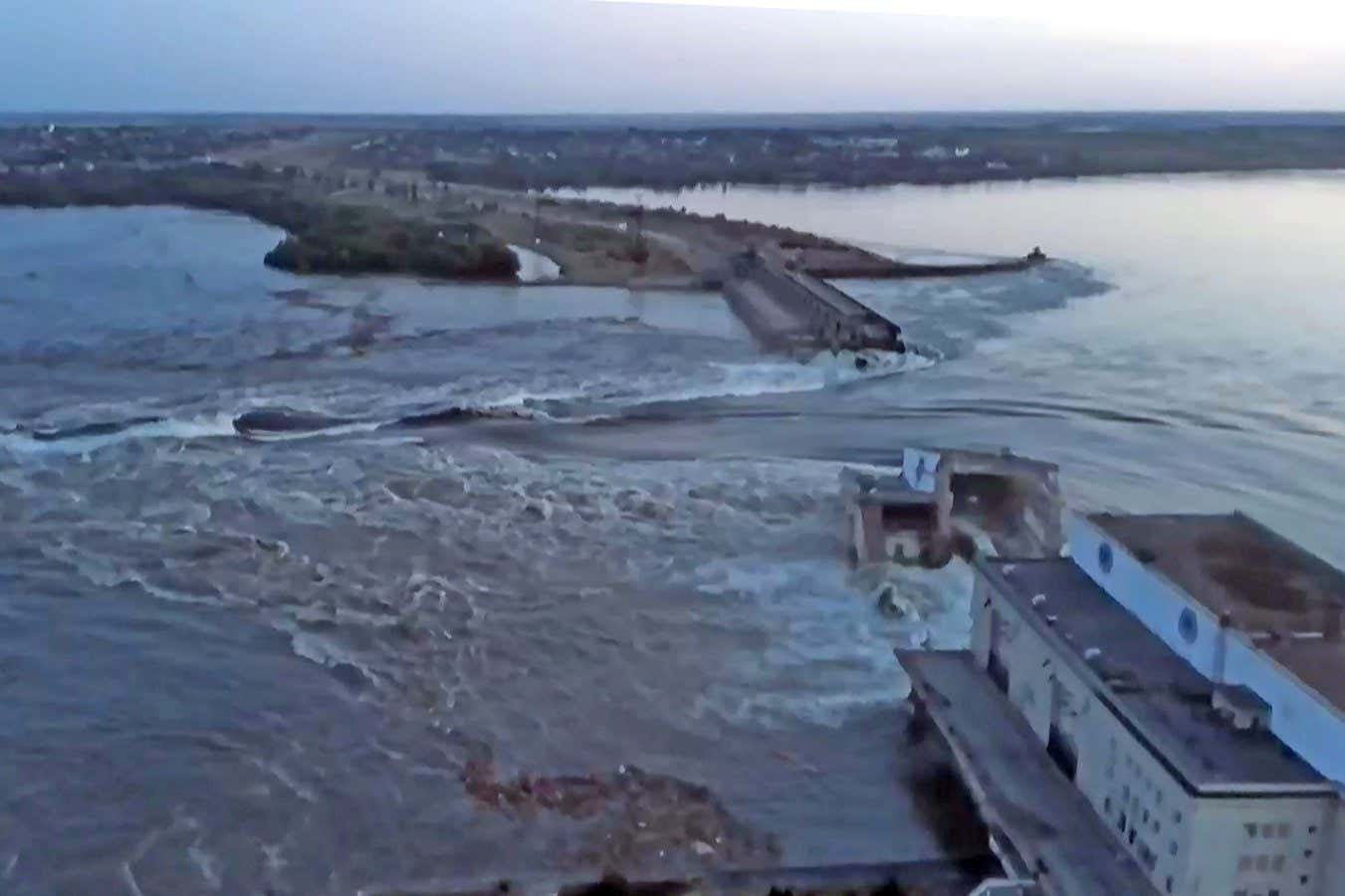The 2023 breach of the Kakhovka dam drained a huge reservoir and exposed a vast area of toxic sediment, creating a debate about how best to rebuild after the Russia-Ukraine war
By James Dinneen
13 March 2025
The Kakhovka dam on 6 June 2023, shortly after its partial destruction
Ukrhydroenergo / UPI / Alamy
The 2023 breach of Ukraine’s Kakhovka dam caused deadly flooding downstream, threatened to disrupt the cooling system of a nuclear power plant and deprived the region of water for irrigation. But an analysis almost two years later finds the most lasting consequence may be the huge volume of contaminated sediment left behind in the drained reservoir.
“The area of the former reservoir served as a big sponge that was accumulating various pollutants,” says Oleksandra Shumilova at the Leibniz Institute of Freshwater Ecology and Inland Fisheries, Germany. Exposure to these contaminants across an area almost as large as Luxembourg could pose a long-term threat to local populations and ecosystems, and could complicate debates about whether to rebuild the dam when the Russia-Ukraine war ends, she says.
Read more
The ocean is losing its ability to store heat as the planet warms up
Advertisement
On 6 June, 2023, a section of the Kakhovka dam in southern Ukraine collapsed after an explosion, releasing a torrent of water from one of the world’s largest reservoirs into the lower Dnieper river and Black Sea beyond. Ukraine and Russia have accused each other of destroying the dam, which was controlled by Russian forces at the time.
Ukrainian officials immediately anticipated that the flooding and pollutants in the water would destroy ecosystems. A spokesperson for the UK-based Conflict and Environment Observatory calls the destruction of the dam “the single most environmentally damaging act of the full-scale invasion”. But the ongoing war has made a more complete assessment in the area challenging.
To get a fuller picture, Shumilova and her colleagues reconstructed the flow of water and sediment after the breach using hydrological models, satellite images and data collected before Russia’s invasion. “Our aim was to give a clear scientific answer: what has happened based on scientific evidence?” she says.
